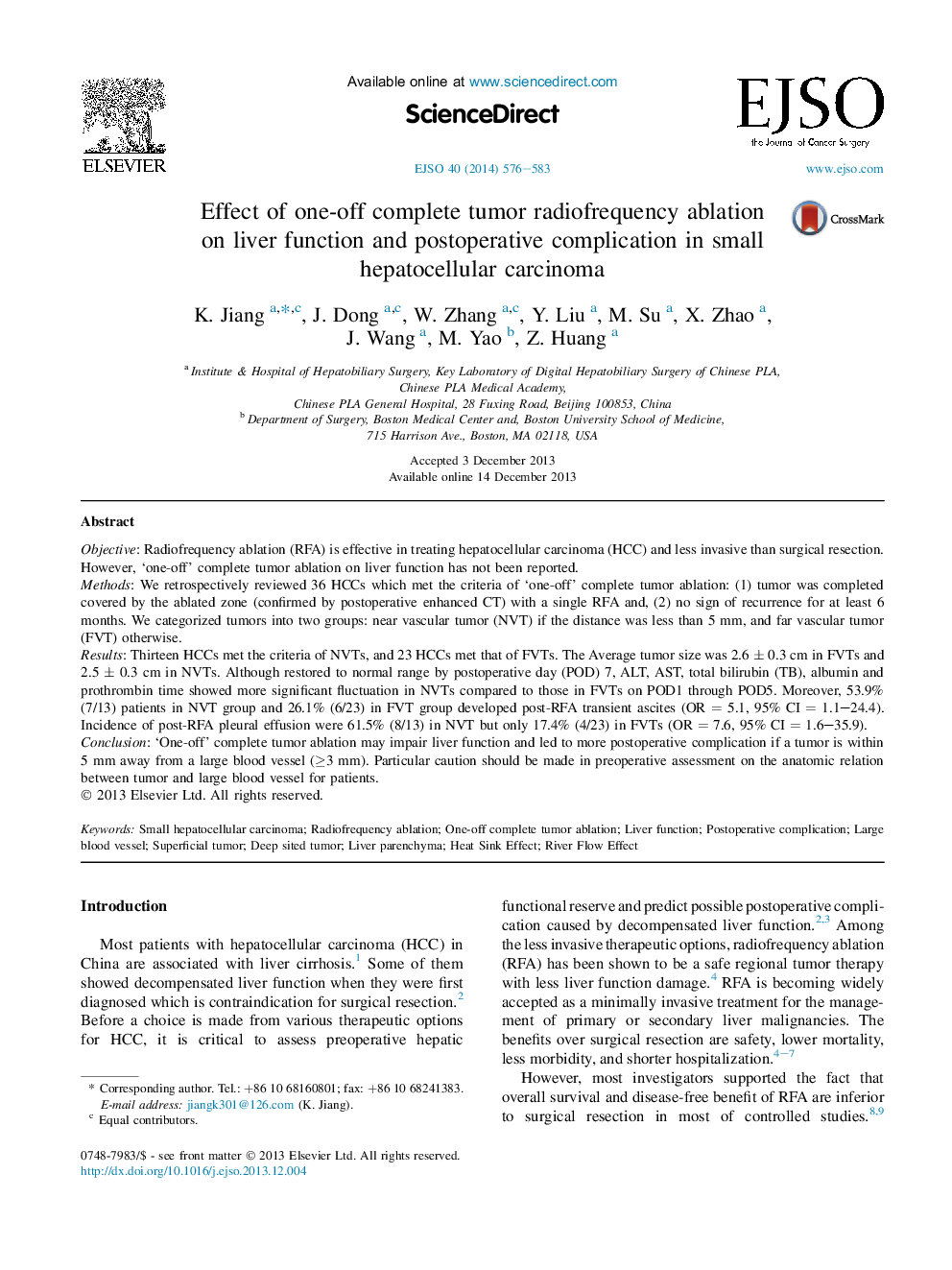| Article ID | Journal | Published Year | Pages | File Type |
|---|---|---|---|---|
| 3985380 | European Journal of Surgical Oncology (EJSO) | 2014 | 8 Pages |
ObjectiveRadiofrequency ablation (RFA) is effective in treating hepatocellular carcinoma (HCC) and less invasive than surgical resection. However, ‘one-off’ complete tumor ablation on liver function has not been reported.MethodsWe retrospectively reviewed 36 HCCs which met the criteria of ‘one-off’ complete tumor ablation: (1) tumor was completed covered by the ablated zone (confirmed by postoperative enhanced CT) with a single RFA and, (2) no sign of recurrence for at least 6 months. We categorized tumors into two groups: near vascular tumor (NVT) if the distance was less than 5 mm, and far vascular tumor (FVT) otherwise.ResultsThirteen HCCs met the criteria of NVTs, and 23 HCCs met that of FVTs. The Average tumor size was 2.6 ± 0.3 cm in FVTs and 2.5 ± 0.3 cm in NVTs. Although restored to normal range by postoperative day (POD) 7, ALT, AST, total bilirubin (TB), albumin and prothrombin time showed more significant fluctuation in NVTs compared to those in FVTs on POD1 through POD5. Moreover, 53.9% (7/13) patients in NVT group and 26.1% (6/23) in FVT group developed post-RFA transient ascites (OR = 5.1, 95% CI = 1.1–24.4). Incidence of post-RFA pleural effusion were 61.5% (8/13) in NVT but only 17.4% (4/23) in FVTs (OR = 7.6, 95% CI = 1.6–35.9).Conclusion‘One-off’ complete tumor ablation may impair liver function and led to more postoperative complication if a tumor is within 5 mm away from a large blood vessel (≥3 mm). Particular caution should be made in preoperative assessment on the anatomic relation between tumor and large blood vessel for patients.
